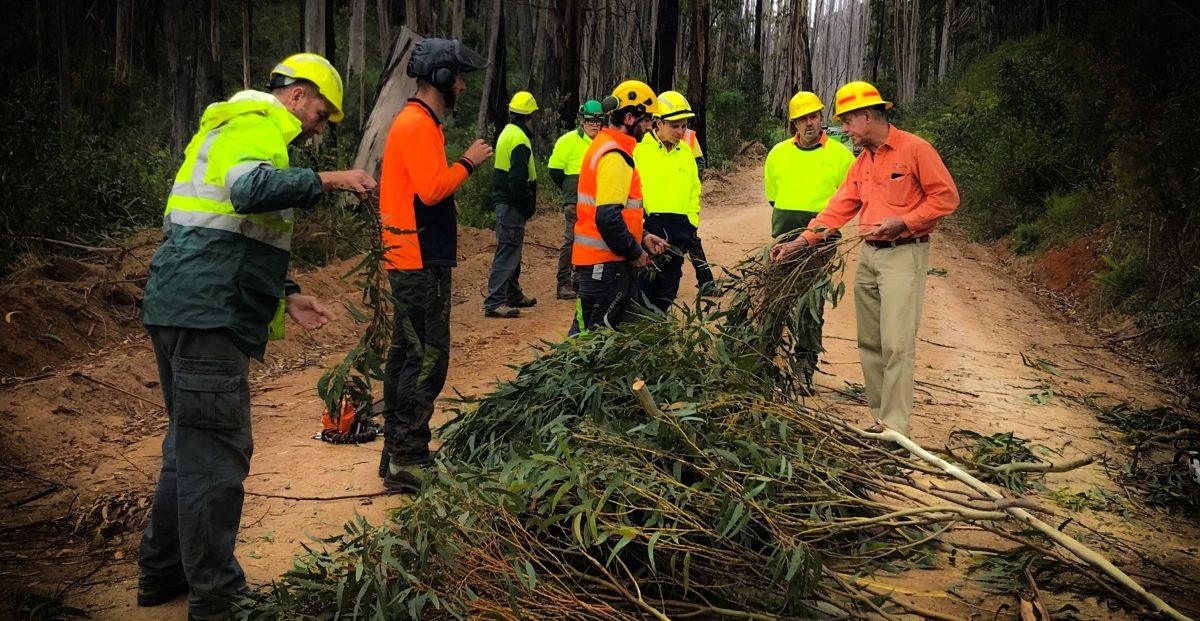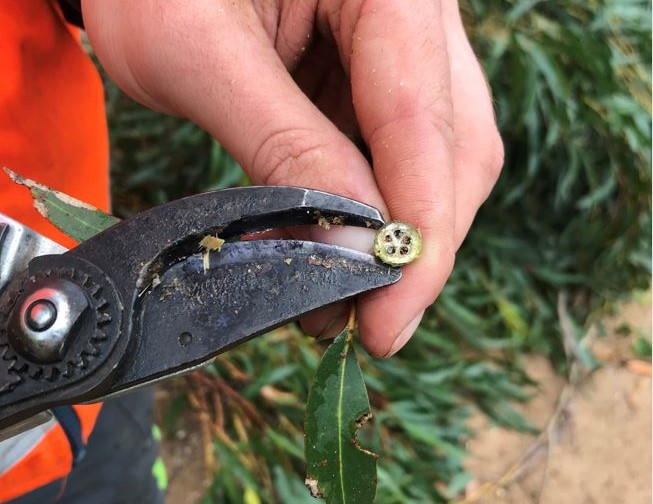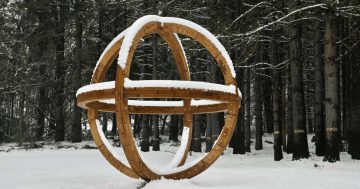
As part of its seed collection program Forestry NSW has been monitoring alpine ash forests in the Snowy Valleys and white ash forests on the South Coast escarpments to pinpoint flowering events since the Black Summer fires of 2019-2020. Photo: Forestry Corporation.
Forestry Corporation has embarked on an extensive seed collection program to safeguard some of the state’s most iconic species, including those in NSW high country and south coast areas impacted by the 2019-2020 Black Summer bushfires.
Among them is the stately alpine ash (Eucalyptus delegatensis), a tree of several more common names including gum-topped stringybark, white-top and woollybutt.
It was first formally described in 1900 by Richard Thomas Baker from a specimen collected by German botanical collector and explorer William Baeuerlen, on Delegate Mountain, just south of the NSW-Victoria border.
Restricted to higher elevations, mostly between 900-1450 metres in Victoria and southern NSW – the alpine ash reaches 70 metres in height, rendering it one of the giants of the southeast Australian eucalypt forests.
Despite its enormous dimensions, the species is highly susceptible to fire and, according to Forestry NSW, large tracts of mature trees died in more than half of the species’ distribution across the forest estate as a result of the recent wildfires.
A similar outcome was also recorded for the species white ash (Eucalyptus fraxinoides) – which grows up to 40 metres tall – and occurs in tableland and coastal forests of southern NSW.
White ash was first formally described in 1898 by Henry Deane and Joseph Maiden from specimens they collected with the aforementioned William Bauerlen on Tantawangalo Mountain near Cathcart, in the Snowy Monaro region.
But both species, according to Forestry NSW, are ‘obligate seeders’, meaning the trees die after exposure to fire, even where the fires are not hot or intense.
The species regenerate solely on seeds stored in soil or the tree canopy and while, after a single fire, ash trees can regenerate in large numbers, the regenerating forest is vulnerable to future fires until it has matured to develop seed itself, which occurs after 20 years.
Forestry Corporation’s Southern Resources supervisor Joel Dawson said ensuring the future of the species gave rise to a seed program, which firstly identifies what mature trees in the forest are carrying seed and flowering.

An Alpine Ash seed is only two to three millimetres in size once extracted. Photo: Forestry Corporation.
He said the collection of alpine ash seed had centred around Bago and Maragle state forests near Tumbarumba, and white ash seed collection confined to the NSW South Coast, as these populations were most at risk of repeat fires.
It’s no small job, starting with several years of monitoring the forests since the fires to pinpoint the flowering events.
Trained arborists who specialise in seed collection and extraction are then required to scale the ash trees and prune seed pods from the canopy.
“We collect from healthy trees through a light pruning of about 30-50 per cent of the canopy. It’s a one-time collection operation from each tree and then we record their location and exclude them from future seed collection programs,” Mr Dawson said.
“Eucalypt seeds are very small, and despite the massive size of the mature trees an alpine ash seed is only two to three millimetres in size once extracted,” he said.
Nearly a tonne of seed pods produces about 25 kilograms of seed, which is just enough to fill three buckets, Mr Dawson said.
The seeds are extracted from pods through a drying process in a rotary kiln and then stored in a cool room at Eden.
“Having a seed bank for these species will be crucial in the event of another fire. This is why it is so important that Forestry Corporation builds an insurance seed store,” Mr Dawson said.
“We need to preserve these important species from not just fires, but also pests and weeds that threaten the health of the forest.”
Ongoing surveys of flowering mean expectations of good seed crops in the coming years are high.
“We will also look to use these seed stores to actively regenerate areas where we identify poor regeneration following the 2019/2020 bushfires,” Mr Dawson said.
After the 2019/2020 bushfires some harvesting occurred in the burnt ash forests, which allowed some of the dead timber to be utilised before it degraded, but that harvesting has now finished.
Regeneration surveys following the fires are being conducted by drones to determine if any additional rehabilitation and seed sowing might be required to regenerate the forest.
In the event of localised extinctions those forests can be regenerated via aerial sowing, says Forestry Corporation.
Original Article published by Edwina Mason on About Regional.








